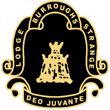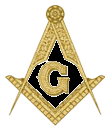
Lodge Burroughs Strange No. 87
Vijayawada, India


Article on Freemasonry - 18
The Ancient Landmarks of the Order
by V.W.Bro. Shankar K. Aiyer, P.G. Chap., Asst. R.G.M.(W.I.),"Remove not the ancient landmark, which thy fathers have set." (Proverbs 22:28).
The Chambers's Twentleth Century Dictionary defines a landmark as any land boundary mark, any conspicuous object on land marking a locality or serving as a guide : as an event of outstanding moment in history, tought etc. Freemasons can trace the origin of this world in their rituals and book of constitutions to the Holy Bible. The various references in that Holy book emphasised the need for a rigourous and meticulous observance of these landmarks in our daily life and conduct, the better to develop a wholesome and well integrated social and community life. Primitive man was led to obey the social mores of his days by these landmarks handed down to him by his forefathers. parables illustrating the baneful effects of violating these landmarks also served to impress on the minds of the devout the good and desirable ends of upholding and sustaining them. In ancient Rome tampering with physical landmarks (boundary-stones) was a very serious offence - a sacrilege that not only placed the offender outside the pale of law but made him liable to be slain with impunity. The sanctity of the lamdmarks - both physical and metaphysical - may be deemed to date from the time that men organised themselves into clans and societies.
Attempts at defining and enumerating the landmarks have not been fruitful as a satisfactory or universally agreed base as to what a landmark is has yet to be found. While many have been propounded none has been found to be entirely satisfactory or wholly acceptable. While a few Grand Lodges (American particularly) have elaborate lists, many others have scrupulously refrained from enumerating them. Many Grand Lodges which have listed the landmarks have published them in their books of constitutions and have thereby given them their official sanction.
Our Grand Lodge, which owes its parentage to the three British Grand Lodges, has like its parents, not committed them into writing. Though the lists of landmarks detailed by the various Grand Lodges vary in number and content a suprising coincidence of views is exhibited in their having a number of common landmarks. A landmark, to be considered as such, must form a fundamental and essential part of Freemasonry, should have existed from time immemorial and must be immutable. Even Grand Lodge, the all powerful authority, in which vests the power to enact laws for the government of the craft, cannot arrogate to itself powers to frame laws contrary to the antient landmarks. For, as the master-elect of a craft lodge on his installation is cautioned, it is not in the power of any man or body of men to make innovations in the body of Freemasonry.
Right from the day of his initiation a Freemason is frequently reminded about the ancient landmarks of the order. As an initiate he is cautioned about the need for his fidelity being exemplified by his strict observance of the constitutions of the fraternity and by his adherence to the antient landmarks of the order : as a fellowcraft he is emboldened to offer his opinions under the supervision of an experienced Master who will guard the landmarks against encroachment and as a master mason he is enjoined to preserve them sacred and invoilable. It is also mandatory for the master-elect to be well skilled in the antient charges, regulations and landmarks of the order, that he may, as the Master of the lodge, maintain them in their fullest splendour.
Though, as we have seen earlier, there is no unanimity as to what exactly constitutes a landmark there is an agreeable degree of correspondence of views among the various Grand Lodges which have enumerated them in the following :-
- A belief in the existence of a Supreme Being.
- The Volume of the sacred Law to be opened in the Lodge and the candidate to seal his obligation on it.
- The universal brotherhood of man.
- The government of the fraternity by a duly elected Grand Master in whom is vested certain prerogatives like presiding over every assembly of the craft, to grant dispensations and to make masons at sight.
- Division of symbolic masonry into three degrees, the legend of the third degree, secret modes of recognition, the necessity for masons to congregate in lodges, the government of a lodge by a Master and his two Wardens and the necessity that every Lodge be duly tyled.
- The necessity for a candidate for initiation being a freeman, sound of limb and of mature age.
- The right of every mason to be represented in all meetings of the craft, the right to appeal to Grand Lodge on decisions made against him by his lodge and the right to visit other lodges.
- The immutability of the landmarks.
The Grand Lodges of England, Ireland and Scotland have, after due and careful deliberation, defined the aims and relationship of the craft. These have been reiterated in totot in successive conferences over the years. Some of these can be recognised as the antient land marks in a different grab. Defined in the above are the requirements of a belief in a supreme Being, the necessity of the Volume of the Sacred Law being open in the lodge and for the candidate to affirm his obligation on the volume of the sacred laws.
Grand Lodges which do not require a candidate for initiation to be a theist or seal his obligation on the Volume of the Sacred Law are not recognised by the other Grand Lodges which are in fraternal recognition. Lodges in fraternal recognition form almost the bulk of organised and recognised Freemasonry and the Grand Lodges not conforming to the above are exceptions and constitute an insignificant part of masonry.
The preservation of the antient landmarks in their fullest splendour is of vital importance for the survival of Freemasonry and for all it stand for.
